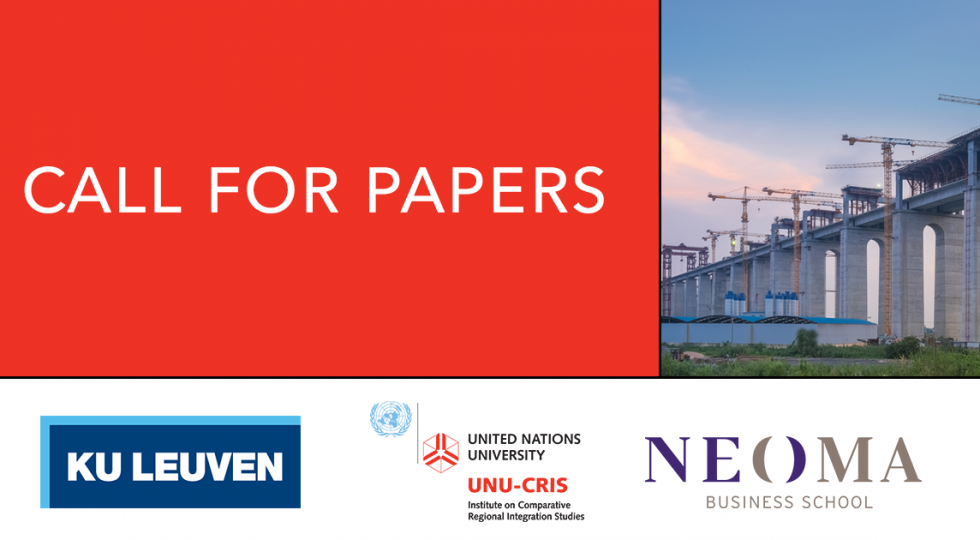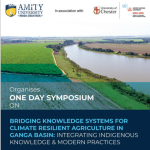Call for Papers: Belt and Road Initiative: Strategic Responses of Governments and Multinational Companies After the Coronavirus Pandemic

Workshop and Special Issue proposal - Asia Pacific Business Review
Editors
Filip De Beule
Department of Management, Strategy and Innovation, KU Leuven, Antwerp-Leuven (Belgium)
Philippe De Lombaerde
United Nation University Institute on Comparative Regional Integration Studies (UNU-CRIS) and Neoma BS.
Haiyan Zhang
Department of Strategy and Entrepreneurship, Neoma Business School, Rouen (France)
The Belt and Road Initiative (BRI), previously known as the One Belt and One Road Initiative (OBOR) until 2016, was launched at the end of 2013 by China’s president Xi Jinping. The BRI’s geographical coverage has been constantly broadening, currently covering over 70 countries, 65% of the world’s population and one-third of the world’s GDP. Since its launch, the BRI has become a crucial component of Chinese external economic relations. In the 13th Five-year Plan for Foreign Trade Development (2016-20), one of the tasks set was ‘raising the cooperation with countries along The Belt and Road’, next to a series of measures to upgrade China’s exports through structural transformation. This has led to government-driven outward investment in mining and infrastructure projects, logistics, industrial parks, etc. in the Eurasia region and beyond.
There are different views on the drivers of the BRI. One view states that its primary driver were domestic considerations, more specifically to accelerate the development of the inner provinces of Western China, transforming the country’s low-cost manufacturing sector into an innovative, high-value driven industry (Made in China 2025 program), and resolve the problem of excess capacities) by either widening the markets abroad or deepening regional growth (Yong, 2016). Related to this, it could be argued that the BRI provides Chinese companies with new investment avenues outside its borders, compared withto less efficient or redundant investment projects domestically. Another view suggests that China’s geo-political strategy was the main driver of the BRI. Within a security framework, greater economic development of the region will help stabilize neighbouring countries and mitigate conflict spillovers. Furthermore, closer economic ties of the regional players (including neighbours) with China will arguably help build mutual trust and curtail tensions (Henrik & Ghiasy, 2017).
Despite the fanfare surrounding the BRI, the success of it has not always been what it has been touted to be. For instance, although an important part of the BRI is governmental loans to assist in the development and construction of connecting infrastructure, many of these proposed plans have not really gone as expectedaccording to plan (Conley et al., 2020; Karaskova et al., 2020). However, an increasingly important component of the BRI initiative is the Digital Silk Road (DSR), which includes projects and investments in artificial intelligence, smart city development and 5G technologies amongst a number of others. China is using new communication technologies, especially 5G to build a ‘global information highway’ with China at its core. Crucially, this policy allows Beijing to « promote its own standards, its own companies and its own digital highway granting it the benefits of new captive markets for Chinese tech firms and tools for leverage » (Hemmings, 2020). Furthermore, in comparison to BRI projects in other sectors, such as infrastructure, DSR-related projects are mostly led by Chinese private enterprises, rather than state-owned companies. The former carry regional plans to expand existing urban clusters, supported by digital ‘smart’ technologies.
Despite the potential profitable opportunities for international private sector companies possessing the required skill and technologies, recent survey results, however, have suggested that the involvement of European companies in the Belt and Road Initiative (BRI) has been very limited so far (European Chamber of Commerce in China, 2020). The dominant role of China’s state-owned enterprises and non-transparent bidding processes, where European companies have been unable to access information on project tenders, could be one of the many reasons. Indeed, it is a common situation in BRI projects, that rather than learning about project opportunities through publicly available procurement information, European companies are brought into the projects by either local Chinese business partners or the government. Furthermore, rather than playing overarching roles, European companies frequently play niche roles in BRI projects, through the provision of certain technological solutions, which Chinese companies do not possess. Lastly, this lack of transparency in procurement mechanisms results in a low participation from multilateral development institutions, like the World Bank. Instead, most of the financing comes from China’s policy banks, commercial banks and even Chinese companies themselves.
Long before the breakout of COVID-19, the Belt and Road Initiative has been already a controversial issue with different viewpoints, such as a policy agenda for the development of Chinese external trade, a plan for the restructuring of global value chain and logistical connections, a strategy to gain access to natural resources, a grand geo-political strategy, a deployment of debt trap diplomacy, etc. While the impact of the pandemic on the geo-economy of Eurasia is still to be seen, it is reasonable to assume that the scope and depth of the Belt and Road Initiative will depend not only on the severity of the current socioeconomic shock and the resilience of the world order (The Diplomat, 07/04/2020), but also on the strategic responses and adjustments of other (state and non-state) actors, e.g. European and Eurasian governments, regional economic organizations and multinational companies, facing the new international context.
The purpose of this special issue is therefore precisely to better understand how multinational companies (MNCs), states, and regional economic organizations respond to the Belt and Road Initiative from a strategic point of view for the post-pandemic era.
Topics of special interest for the special issue include but are not limited to:
- Impact of possible decouplings and disconnections of the world economy in general and global value chains in particular on the strategic position of governments and MNCs in the context of the Belt and Road Initiative
- Case-studies of strategic responses to the Belt and Road Initiative of multinational companies, national and subnational governments, or regional economic organizations in the Eurasian space, outside China
- Case-studies of interactions of Chinese multinational companies with local actors in Eurasia
- Case-studies of the impact of Chinese investment projects in Eurasia and their functionality within the broader Belt and Road Initiative
- Geo-political and geo-economic analyses of the changing strategic context for private and public actors in the region in the post-pandemic world
- Locational and logistic determinants of strategic investment in the Eurasian space and its restructuring
- Quantitative analyses of the dynamics of FDI flows in the Eurasian space
- New patterns of centrality in the Eurasian space
Instructions for contributors
Interested contributors are invited to submit abstracts by 15 September 2020. Please send abstracts to: filip.debeule@kuleuven.be, pdelombaerde@cris.unu.edu, and haiyan.zhang@neoma-bs.fr
Abstracts will be selected by 30 September 2020
First drafts should be submitted by 15 January 2021
The selected authors will be expected to present their paper at a Special Issue workshop to be held at NEOMA Business school in Paris, early 2021, if sanitary conditions allow. Otherwise, a virtual workshop will be organized.
Final selected papers will be published in a Special Issue of the Asia Pacific Business Review, provided they pass the peer review process.




